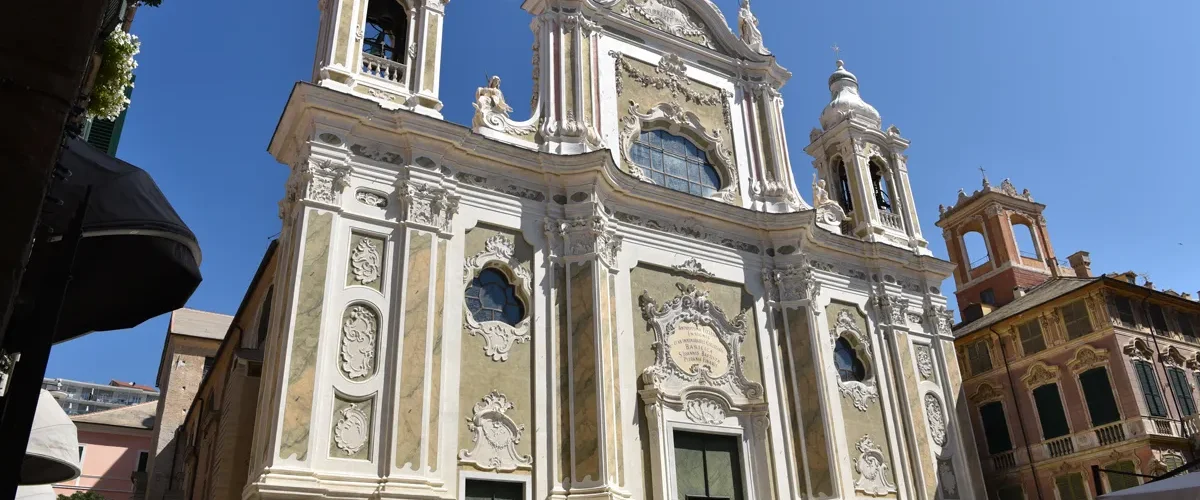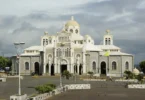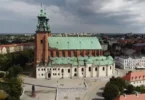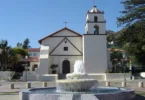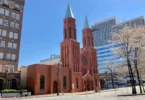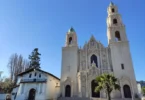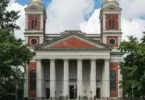Introduction
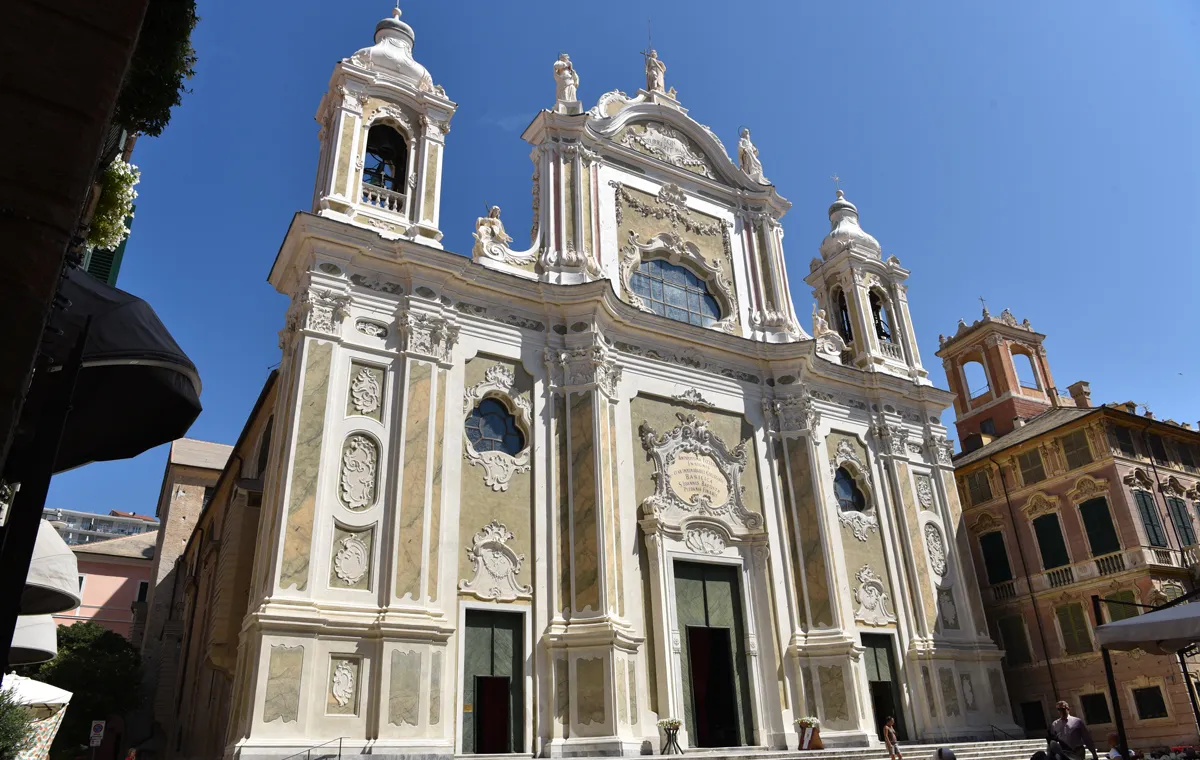
The Collegiate Church of San Giovanni Battista is a prominent Catholic place of worship located in the picturesque district of Finale Marina, along Via Giuseppe Garibaldi, in the municipality of Finale Ligure, within the province of Savona, Liguria, Italy. This historic church serves as the central seat of the parish community of San Giovanni Battista, which is part of the vicariate of Finale Ligure-Noli within the Diocese of Savona-Noli. The church holds the title of Minor Basilica, an honor granted due to its historical and religious significance. Built in the 17th century, the Basilica of San Giovanni Battista is renowned for its striking Baroque architecture and its artistic beauty, making it one of the most notable examples of Baroque churches in the Savona region and the wider Liguria area. The church is a revered spiritual and cultural landmark, attracting both locals and visitors who admire its artistic and architectural splendor. Over the centuries, it has remained an essential part of the religious life of the region, continuing to serve as a center for worship and community events.
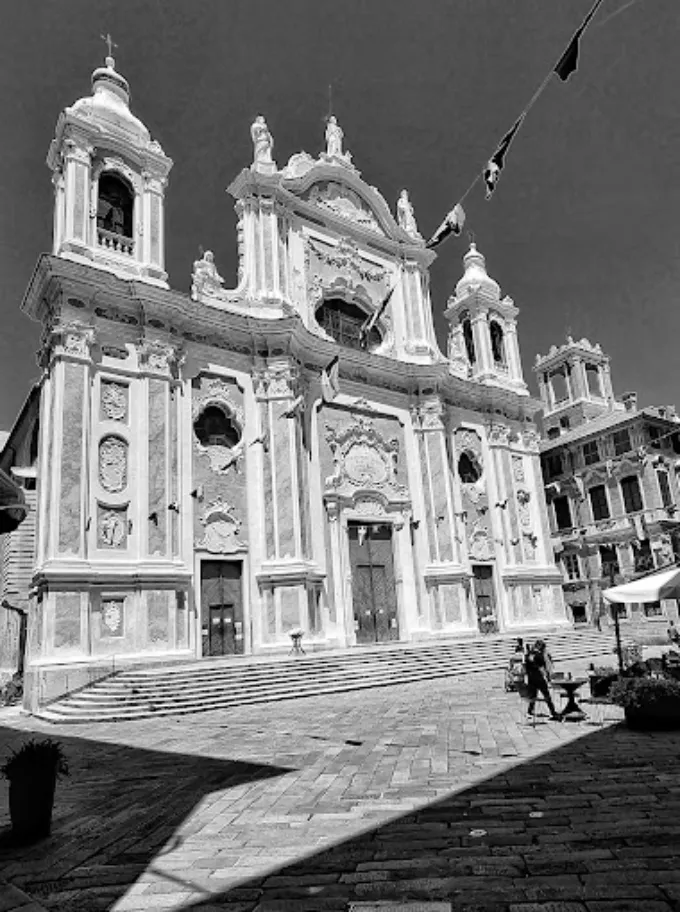
The Collegiate Church of San Giovanni Battista, located in Finale Ligure, Liguria, is an architectural gem that showcases the Baroque style in its most refined form. Its construction began in 1619, driven by the need to establish a larger, more prominent place of worship in the Finale Marina area. The project was ambitious and took a span of 55 years, as it progressed through various phases, including significant contributions from local craftsmen who embraced the Baroque aesthetic. The church was officially completed in 1674, marking the end of its construction, and was consecrated the following year in 1675. This ceremonial consecration was an important event in the history of the church, solidifying its status as a central place of worship for the community.
For many years, the architectural credit for the church’s design was wrongly attributed to the famous Baroque architect Gian Lorenzo Bernini, who was known for his work in Rome and for his influence on the Baroque movement throughout Italy. This attribution likely arose due to the church’s stylistic similarities to Bernini’s works. However, upon further investigation and careful study of the church’s architectural features, it was determined that the design of the church was not directly the work of Bernini himself, but rather the result of local artisans and architects who closely followed the Baroque style inspired by him. These local craftsmen brought their own creative interpretations to the design, which included intricate details and artistic elements reflective of the broader Baroque movement.
In 1762, the church underwent a significant transformation to its façade. The revision work was carried out by Nicola Barella, an architect from Finale Marina, who modified the original façade to give it a more refined Baroque look. Barella’s work was part of a broader effort to maintain and enhance the church’s aesthetic appeal, ensuring that it remained a striking and significant landmark in the region. A major turning point in the church’s history occurred in April 1930, when Pope Pius XI elevated the church to the dignity of a Minor Basilica. This recognition was a reflection of the church’s importance not just as a local place of worship, but as a significant religious and cultural site in the Diocese of Savona-Noli. The elevation to Minor Basilica also acknowledged the church’s historical and artistic value, ensuring that its legacy would continue to be celebrated and preserved for future generations.
Today, the Collegiate Church of San Giovanni Battista stands as one of the most beautiful Baroque churches in Liguria, admired for its architectural grandeur, historical significance, and the artistic richness it brings to the region. Its unique history, including its evolution over the centuries, makes it a valuable part of Italy’s religious and cultural heritage.
Architecture of Collegiate Church of St. John the Baptist, Finale Ligure, Italy
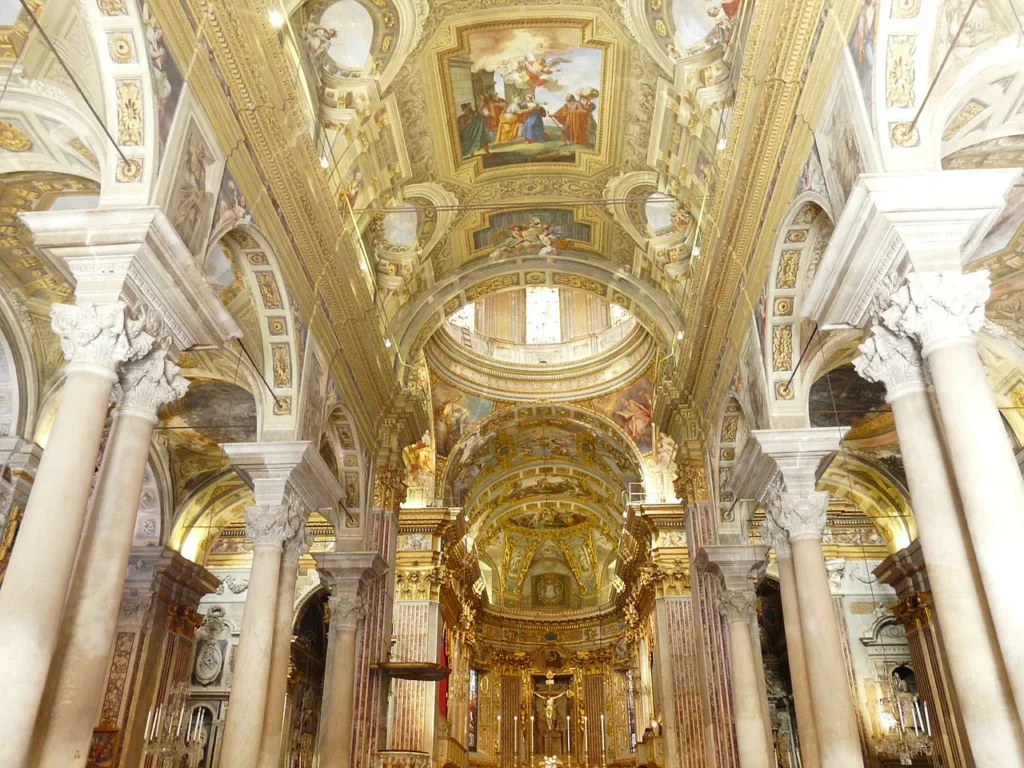
Architectural style: Baroque architecture
External Features
The exterior of the Collegiate Church of San Giovanni Battista is characterized by a Baroque style that combines both artistic and architectural grandeur. Dominating the facade are several statues created by the renowned sculptor Bartolomeo Bagutti. These statues depict Saint John the Baptist, the Apostles Peter and Paul, as well as Hope and Faith. These sculptural elements contribute significantly to the church’s artistic richness, making it a landmark in the Finale Ligure region. The dome of the church, a stunning feature of the building, reaches a height of 24 meters and was constructed in 1780. This architectural achievement was made possible by the work of Giuseppe Barella, with assistance from Genoese artists Simone Cantoni and Emanuele Andrea Tagliafichi. The dome adds to the church’s monumental and awe-inspiring presence, both from the outside and from within.
Internal Features
Inside, the Collegiate Church of San Giovanni Battista is the largest church in the Diocese of Savona-Noli. The interior follows a three-nave layout, divided by twin columns in two rows. These columns, reminiscent of the early 17th-century Genoese style, impart a sense of grandeur and open space. The counter-façade showcases three large frescoes created in 1808 by Paolo Gerolamo Brusco. These frescoes vividly illustrate key scenes from the life of Saint John the Baptist, including The Baptism of Jesus, St. John the Baptist preaching on the banks of the Jordan, and The Glory of the Precursor. Brusco also contributed to the artwork in the presbytery, painting the frescoes on the vault and the central window of the apse.
The decorative paintings in the central nave were executed by Giuseppe Passano in 1830, depicting scenes from the life of St. John the Baptist surrounded by angelic figures. The twelve chapels within the church, each with its own distinct religious theme, are adorned with frescoes by Giacomo Picco, further enhancing the Baroque aesthetic. In the right nave, the fourth chapel houses a 17th-century canvas depicting the Martyrdom of Saint Andrew. The transept chapels display works by Domenico Bocciardo, including paintings of the Madonna and Saints, and Giovanni Battista Merano’s Glory of Saint Nicholas of Bari. Merano also frescoed the vault of the transept in 1693.
In the presbytery, the high altar is made of polychrome marble and was crafted in 1767 by the Genoese sculptural school, providing an impressive focal point. The choir, dating from the 18th century, adds to the grandeur of the area. The fourth chapel of the left nave is adorned with sculptures by Antonio Brilla, including Jesus gives the keys to Peter, and a crucifix by Anton Maria Maragliano. The pulpit, crafted by Pietro Ripa, dates from the second half of the 18th century. The sacristy of the church houses several valuable paintings from the 17th and 18th centuries. One notable restoration is the canvas of Sant’Erasmo and San Nicolao, which depicts the view of Finale Marina and the surrounding area in the 17th century.
Pipe Organ
The pipe organ is located in the choir loft on the right wall of the presbytery. Built in 1904 by Cesare Bernasconi and his son Giovanni, the organ has undergone restoration in 2002 by Graziano Interbartolo and Giuseppe Fontana. The organ features a pneumatic transmission system and includes a window console with two keyboards (each with 61 notes) and a straight pedalboard of 27 notes. The organ’s case, supported by two Corinthian pilasters, has a cornice with 25 principal pipes displayed prominently, topped with a wood-carved fake curtain, which adds to its elegant appearance. The organ plays an essential role in the church’s musical tradition, enhancing the liturgical and spiritual atmosphere during services and ceremonies.
Feast Day
Feast Day : 24 June
The Feast Day of St. John the Baptist is traditionally celebrated on June 24 each year. This feast honors the birth of St. John the Baptist, the patron saint of the Collegiate Church of St. John the Baptist in Finale Ligure, Italy. The church’s dedication and celebrations are aligned with this feast.
Church Mass Timing
Monday : 6:00 PM
Tuesday : 9:00 AM
Wednesday : 6:00 PM
Thursday : 6:00 PM
Friday : 6:00 PM
Saturday : 6:00 PM
Sunday : 9:00 AM , 11:00 AM , 6:00 PM
Church Opening Time:
Daily : Open 24 Hours
Contact Info
Address :
Via Gian Lorenzo Bernini, 2, 17024 Finale Ligure SV, Italy.
Phone : +39019692551
Accommodations
Connectivities
Airway
Collegiate Church of St. John the Baptist, Finale Ligure, Italy, to Idroscalo di Spotorno Airport, distance between 16 min (11.0 km) via SS 1.
Railway
Collegiate Church of St. John the Baptist, Finale Ligure, Italy, to Pietra Ligure 17027, Pietra Ligure SV, Italy, distance between 11 min (6.3 km) via SS 1.

